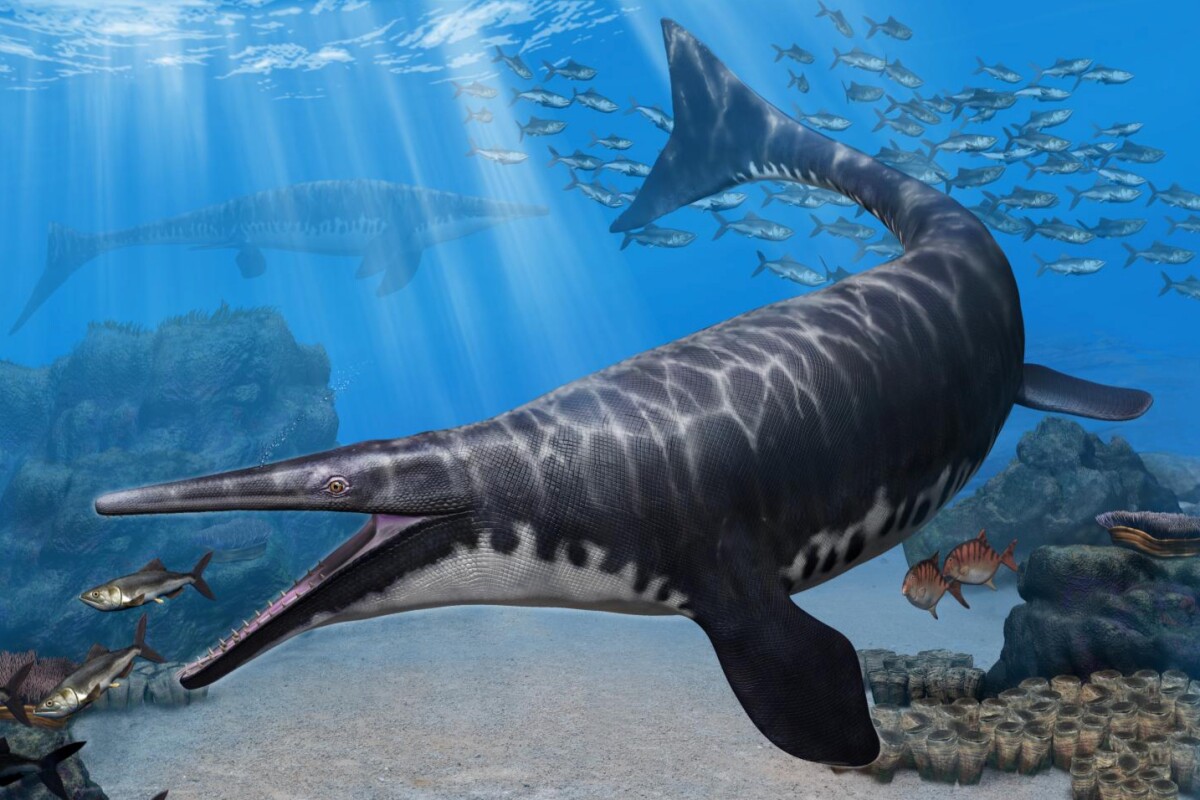Along with the megalodon shark, the mosasaur was likely one of the most ferocious prehistoric marine predators. A previously unknown species of the reptile has now been classified, and it sported a crocodile-like snout that may have allowed it to catch prey that others missed.
Named Gavialimimus almaghribensis, the creature lived 72 to 66 million years ago, in the waters surrounding what is now Morocco. A 1 meter-long (3.3-ft) fossilized skull of the animal, along with some other bones, were unearthed in a phosphate mine in that country not long ago.
Based on an analysis of those fossils, an international team of paleontologists recently determined that Gavialimimus was in fact a unique species of mosasaur. Over a dozen other types of the reptile lived in the same region, some growing up to 17 meters (56 ft) in length.

Gavialimimus' most distinguishing characteristic was its long, narrow snout with interlocking upper and lower teeth. The gharial, which is a present-day relative of crocodiles and alligators, has a similar snout.
According to lead scientist Catie Strong, who is a paleontology master's student at Canada's University of Alberta, this feature may have allowed it to compete against other predators for sustenance.
"This mosasaur was likely adapted to a specific form of predation, or niche partitioning, within this larger ecosystem," she says. "For some species, these adaptations can be very prominent, such as the extremely long snout and the interlocking teeth in Gavialimimus, which we hypothesized as helping it to catch rapidly moving prey."
Strong conducted her research under the guidance of U Alberta's Prof. Michael Caldwell, and collaborated with colleagues from the University of Cincinnati and Australia's Flinders University.
Source: University of Alberta





